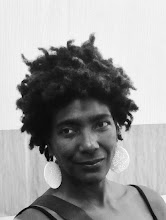THE
WORDS is a film that brings a whole new meaning to the term character driven.
Here, four different men play one principle character. He has different names,
ages and stages of creative capacity portrayed by Bradley Cooper, Jeremy
Irons, Ben Barnes and Denis Quaid. The character is in love with a story
which has been translated into a literary work. There is an element of torment
and ineptness in the love. The moral muse of the male character is
played by three women; Olivia Wiled, Zoe Saldana, and Nora Arnezeder. The
capacity of this film to telescope one character and story into another is
a marvelous Rubik's cube. Director Brian Klugman and
co-writer Lee Sternthal should be well recognized for their facility in
showing the multiple faces of this tale. Each man in the film wants to
own the story in question and does.
THE
WORDS is important to bioethics because it illustrates that ownership of a
narrative is complex; even more so when embroidered by its
developmental consideration. Literature, like science, resembles a value,
like peace, more than property. Such values are owned by the collective not by
the individual. We process all art through our own experience. Isn't
it what artists want us to do? What is really the harm of taking someone
else's creative product as one's own? Novels are usually solo
creations. Other art forms, film, dance, drama and research are
collaborative. How can they be considered to have only one author? This
delicate tangle of creative influences is often blown away by matters of law,
abandoning obligations to understanding the moral significance of creative
theft. Regulatory, societal devices co-modify creativity; confining it to the
potential monitory product it yields.
A narrative
has to be recorded in order to be owned under law, despite how its
derived. The issue is chronology of registration as with patents, trademarks,
publication copyright and other intellectual property registries. Theirs is also
a question of order of authorship. Ownership in terms of moral authority to
tell a story is more muddy. (See THE HELP on this blog.) In the eyes of
the law, oral folk tales are not owned until published. Then they are owned by
the publisher and editor. These stories exist for generations as the common
property of the group of people who generate them, usually orally.
To paraphrase the late director of the game changing film BLUE, Krzysztof
Kieślowski, the best of these narratives find resonance between people, breaking
down isolation and becoming a part of culture. In this transcendence narratives
can become universal.
There
are only a few universal themes; love, birth, suffering, loss and death. Universal stories are common to all persons, if not to all living things. How a
universal story differs in the telling is the key to intellectual property or
legal ownership in literature. THE WORDS presents a new telling. The film is a
constellation of stars without need for a sun.
In contrast to literature, scientific integrity in research is
dependent on reproducing the methods of other researchers to reach the
same conclusion. Science is almost always collaborative. A hypothesis,
ingeniously generated, is tested by attempts to disprove it. If the
hypothesis cannot be disproved, that bit of information obtained is
considered to be true. More experimental manipulation clarifies the amount of
pressure a particular truth can withstand without becoming lost. The
rules (laws and policies) defining research misconduct usually include:
intentional fabrication, falsification, plagiarism or other serious
deviation from accepted practices of science in proposing, carrying out
or reporting results of research (Macrina, 1995).
Bench
researchers and other artist/craftsmen are both relatively low on the economic
food chain. Their rewards for moral integrity are left largely unremunerated
and errors in method swiftly found intolerable. Bad research
results in dangerous medicines, medical implements, unsafe building
structures and on and on. But the harm of plagiarism is broader
than a mis-shaped commodity. Science is Art. Both are creative endeavors coming
from a shared reservoir of human consciousness. Creativity is
discouraged when it is not recognized. Plagiarism causes a creative post-traumatic
stress syndrome, brilliantly depicted by Jeremy Irons in THE WORDS. Draining
the creative reservoir limits creative growth and stifles prospects
for cultural and intellectual evolution.
THE WORDS (35 mm) directed by Brian Klugman (2012) USA. CBS
Films. 96 min.
For
more understanding see:
Macrin,
Francis. Scientific Integrity: An introductory Text with Cases. American
Society of Microbiology. Washington, DC. 1995. p 1-14
THE
HELP (35 mm) directed by Tate Taylor. (2011) USA. Touchstone Pictures. 146 min.
Tricolor:
Blue. (35 mm) directed by Krzysztof Kieślowski (1993) France, Poland,
Switzerland. Mirmax/MK2 Diffusion.
